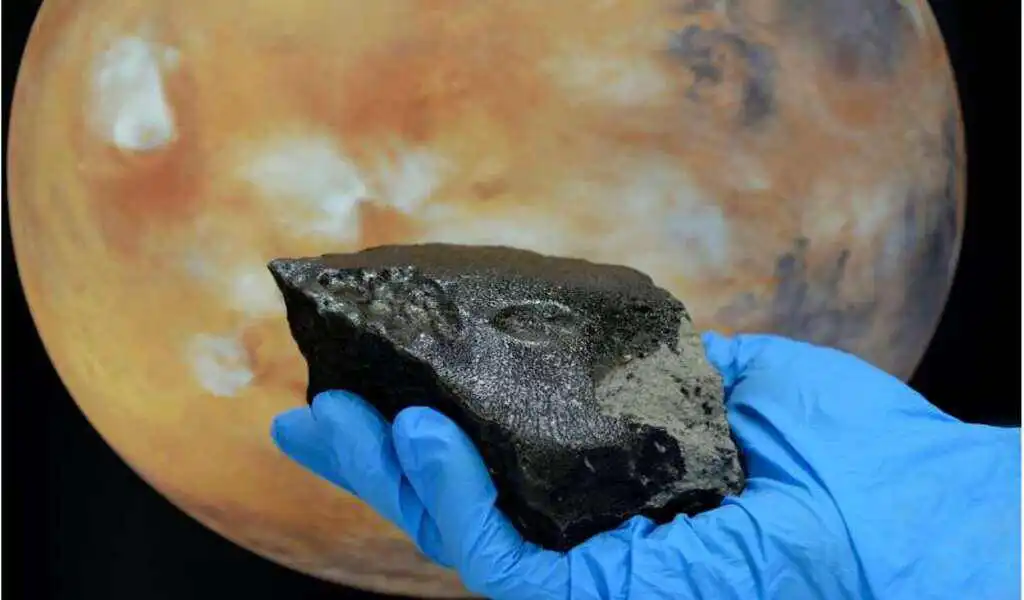Tech
The Martian Meteorite Contains a Lot Of Organic Stuff

(CTN News) – According to a team of international researchers led by Martian Philippe Schmitt-Kopplin from Helmholtz Munich and Carnegie’s Andrew Steele, the Martian meteorite Tissint contains an impressive diversity of organic compounds. The research has been published in Science Advances.
A Martian meteorite named Tissint, which crashed landed in Morocco more than 11 years ago, is one of only five meteorites that have been observed as they fell to Earth. About 30 miles from the town named after it, pieces of it were found scattered throughout the desert.
Our nearest neighbor, Mars, formed this sample of Martian rock hundreds of millions of years ago and launched it into space as a result of a violent event.
Investigating the origins of the Tissint meteorite’s organic compounds may provide insight into whether life ever existed on the Red Planet. This will enable them to understand the history of Earth’s geology.
Mars and Earth share many aspects of their evolution, according to lead author Schmitt-Kopplin.
In addition, while life developed and thrived on Earth, the question of whether it ever existed on Mars is a very hot research topic that requires a deeper understanding of its water, organic molecules, and reactive surfaces.”
As well as carbon, hydrogen, oxygen, nitrogen, sulfur, and sometimes other elements, organic molecules contain other elements as well.
While organic compounds are commonly associated with life, previous research on Martian meteorites has demonstrated that they can also be produced by non-biological processes.
“Understanding the processes and sequence of events that shaped this rich organic bounty will reveal new details about Mars’ habitability and possibly about the reactions that could lead to life formation,” says Steele, who has conducted extensive research into organic materials present in Martian meteorites, including Tissint, and has served on both the Perseverance and Curiosity rovers’ science teams.
A thorough analysis of the meteorite’s organic inventory revealed a link between the type and diversity of chemical molecules and specific mineralogy.
Their efforts led to the most comprehensive catalog of organic compounds found in Martian meteorites or in samples collected and analyzed by rovers.
As a result of this study, details have been uncovered about the processes occurring in Mars’ mantle and crust, especially when considering abiotic organics that are formed as a result of water-rock interaction.
An intriguing finding was the abundance of organic magnesium compounds, an ensemble of molecules previously undiscovered on Mars, which offer new insights into the high-pressure, high-temperature geochemistry of the planet’s interior and suggest a link between its mineral evolution and the carbon cycle.
Researchers anticipate that future missions to Mars will provide a wealth of information about the formation, stability, and dynamics of organic compounds in real Martian environments.
Is Martian a true story?
That means that while the story is fictional, a lot of the cool stuff Mark comes up with to survive is based on real science. However, the movie wasn’t able to get everything exactly right.
SEE ALSO:
UBIsoft Closed 3 Unannounced Games And Postponed Skull & Bones. Then






























